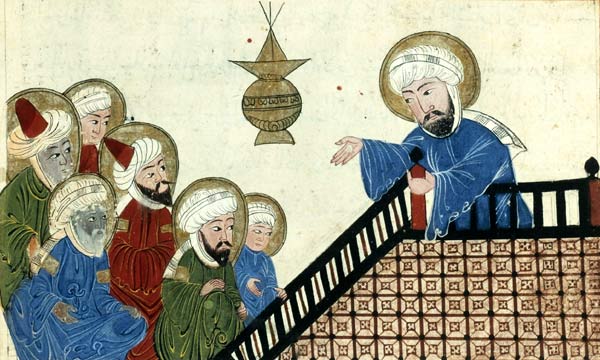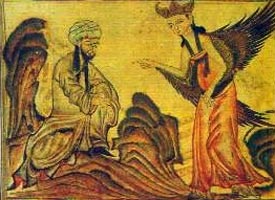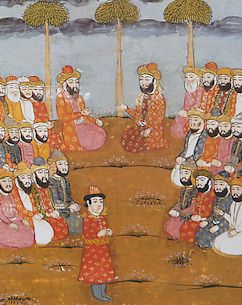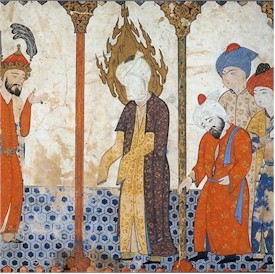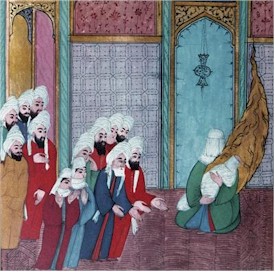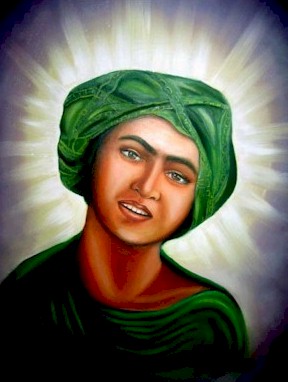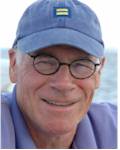Bible | Movies | Books | People | Hot Topics | Holidays | Humor | Gallery | Sanctuary | Sermons | Prayer | Quizzes | Communities | God | FAQ | Links
|
Sponsored Link |
In the context of the furor over the satirical cartoons of Muhammed, it is often stated that Islam prohibits visual illustration of the Prophet, even when the artist's intent is to instruct the faithful or glorify Islam. As is the case with almost any other generalization about any religion, there are exceptions. In fact, there are countless examples of paintings and other artwork from Muslim or Arab cultures that depict the Prophet. I have collected a number of such examples and reproduced them below. In some cases, the artist attempts to circumvent the tradition by obscuring the Prophet's face or showing it covered; in other cases no such restraint is shown. In any case, the Quran is silent on the question of whether it is appropriate to paint a picture of Muhammed. There are, however, specific texts within the Hadith (collections of stories and sayings of Muhammed which have been passed down by others but which Muslims accept as authoritative). These sayings have been interpreted differently and applied inconsistently within the several branches of Islam. Within some Muslim communities images of Muhammed have proliferated, while in other Muslim communities figurative art of any kind has been prohibited. Is should also be pointed out that the underlying motivation for avoiding representation of Allah or the prophets arose out of a belief shared with Christianity and Judaism: it is dangerous to create images that tempt the faithful into the sin of idolatry, that is, worshipping anything less than God. The strictures against some forms of visual art have not resulted in an absence of art in Muslim cultures, however. On the contrary, the major museums of the world have wonderful and impressive collections of Islamic materials. For more on the characteristics of Islamic art. Examples of Islamic Art Depicting Muhammed
Do these paintings reveal anything about what Muhammed actually looked like? The truth is, we will never know. For while there have been numerous word pictures of Muhammed, most of them reflect the feelings and beliefs of the writer, rather than being objective descriptions of the prophet's features. For example, consider a widely quoted passage written by Muhammad Husayn Haykal, an Egyptian biographer, in his The Life of Muhammad. "...Muhammad was handsome of face and of medium build, and neither conspicuously tall nor inconspicuously short. He had a large head with very black thick hair, wide forehead, heavy eyebrows, and large black eyes with a slight redness on their sides and long eye-lashes to add to their attractiveness. He had a fine nose, well spaced teeth, a thick beard, a long handsome neck, wide chest and shoulders, light colored skin, and thick palms and feet. He walked resolutely with firm steps. His appearance was always one of deep thought and contemplation. In his eyes there lurked the authority of a commander..." In his eyes "lurked authority." Say that again? But what color were his eyes? "Handsome of face and medium build." That wouldn't be much help to detectives trying to investigate a crime, or an artist trying to draw a picture of someone the police might be looking for. Of course, Muslims often make the point that their Prophet's physical appearance is of little importance. Rather, what truly matters is the truth he revealed of Allah. And the significance of that will be determined neither by cartoons that make fun of Muhammed, nor by the shouts of protest that have arisen in the streets of so many Muslim countries. It is a time of testing for all the religions of the world, and the jury is still very much out as to whether any of the children of Abraham are able to live in faithful obedience to a God of justice, mercy, and peace. A concise summary of major characteristics of Islamic art Calligraphy is the most important and pervasive element in Islamic art. It has always been considered the noblest form of art because of its association with the Quran, the Muslim holy book, which is written in Arabic. This preoccupation with beautiful writing extended to all arts—including secular manuscripts; inscriptions on palaces; and those applied to metalwork, pottery, stone, glass, wood, and textiles—and to non-Arabic-speaking peoples within the Islamic commonwealth whose languages—such as Persian, Turkish, and Urdu—were written in the Arabic script. Another characteristic of Islamic art is a preference for covering surfaces with patterns composed of geometric or vegetal elements. Complex geometric designs, as well as intricate patterns of vegetal ornament (such as the arabesque), create the impression of unending repetition, which is believed by some to be an inducement to contemplate the infinite nature of God. This type of nonrepresentational decoration may have been developed to such a high degree in Islamic art because of the absence of figural imagery, at least within a religious context. Contrary to a popular misconception, however, figural imagery is an important aspect of Islamic art. Such images occur primarily in secular and especially courtly arts and appear in a wide variety of media and in most periods and places in which Islam flourished. It is important to note, nevertheless, that representational imagery is almost invariably restricted to a private context. Figurative art is excluded from the decoration of religious monuments. This absence may be attributed to an Islamic antipathy toward anything that might be mistaken for idols or idolatry, which are explicitly forbidden by the Quran. -- Linda Komaroff, Los Angeles County Museum of Art For further reading: What Would Muhammed Do (about the cartoon controversy)? One Muslim's Answer.
Please take a moment to let us know you
were here!
If you want to talk with someone in person, please feel free to call 917-439-2305
The Rev. Charles P. Henderson is a Presbyterian minister and is the author of God and Science (John Knox Press, 1986). Charles also tracks the boundry between the virtual and the real at his blog: Next World Design, focusing on the mediation of art, science and spirituality in the metaverse. For more information about Charles Henderson. |
Sponsored Link
|
|||||||||||||||

